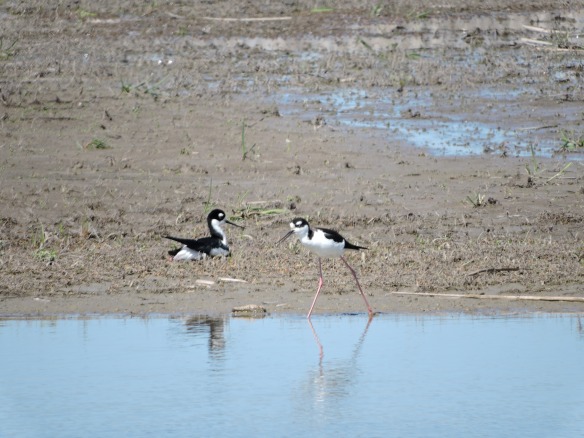The last two weeks I have birded my new local patch at the Purdue campus hoping to add to my green list with early spring migrants. In the process, I significantly added to it as a hotspot since I wasn’t really birding it last spring after I moved in nearby.
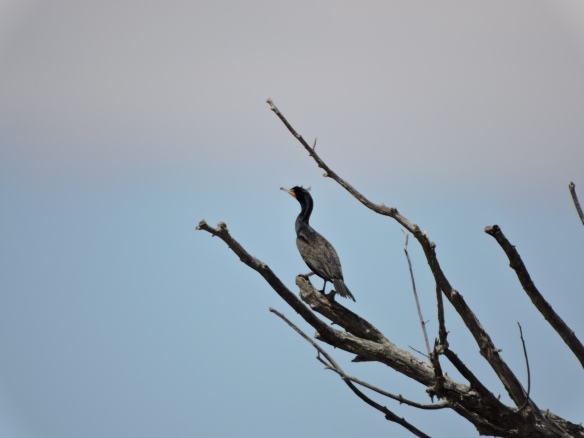
Double-crested Cormorant
One of the first birds I saw on my first outing there was a lone Double-crested Cormorant high in a snag on an island in the river. These guys are plentiful in the county, but I have not seen very many along the rivers. They usually appear at the water treatment plant or the larger pools at Eagle Marsh.
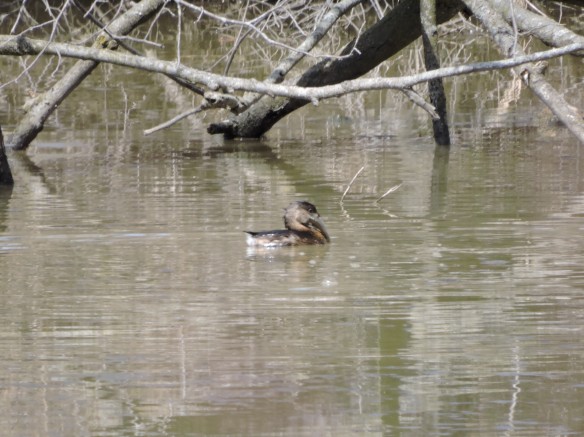
Pied-billed Grebe
The other FOGY riverfowl was a Pied-billed Grebe. I am not sure how these birds have not evolved into grotesque, portly, flightless gluttons. It seems as though every time I see one it is cramming a fish the size of its head down its throat.
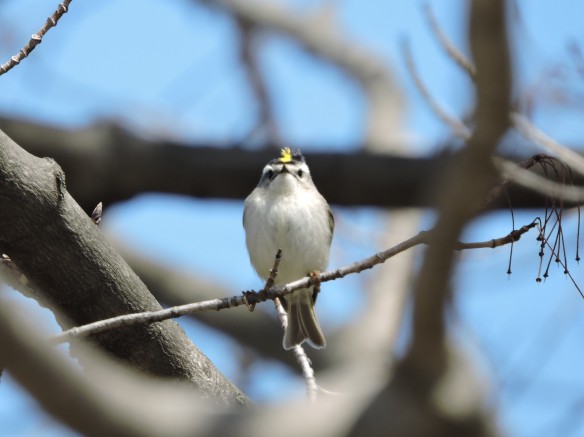
Golden-crowned Kinglet
There were dozens and dozens of Golden-crowned Kinglets in every tree. They were also a new addition to the property for me. I decided to try and catch a photo of the fast little buggers. I only managed one shot, but it turned out okay!
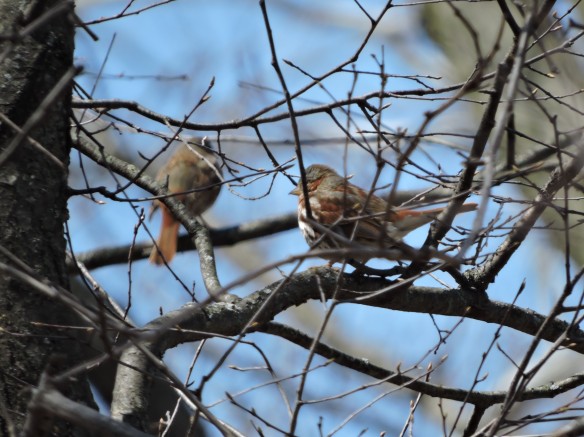
Fox Sparrows
Also checking in for the passerines were more Fox Sparrows than I have ever seen in my life. That is not an exaggeration. There were at least three dozen of them in the brush by the soccer complex, with a great many of them singing.

Fox Sparrow
With as numerous as they were, none would pose for a good photo. Still, this is a bird I have for whatever reason only seen in one previous year’s green list, so it was an exciting time.
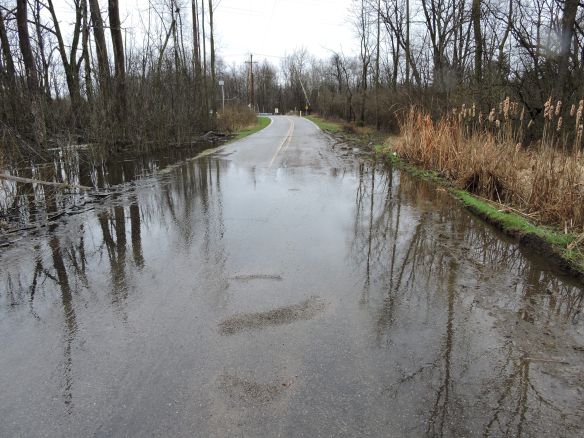
Washout
A week later I returned for more list building. The weather had changed significantly from the previous week, with torrential rains breaking just enough for me to bird for an hour or so on Sunday. The downpour was enough to wash out the road, but the birds loved it.
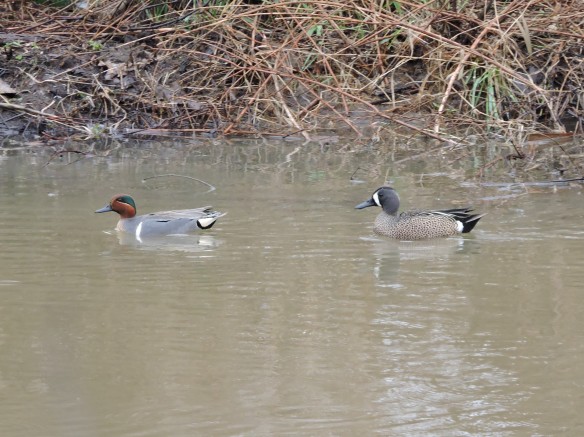
Teal Buddies
The first neat thing that I saw were two ducks in the river. A male Green-winged and a male Blue-winged were hanging out together, following each other around closely with no other ducks nearby. Teal bros stick together, I guess. Both duckies were FOGYs and new birds for the patch.
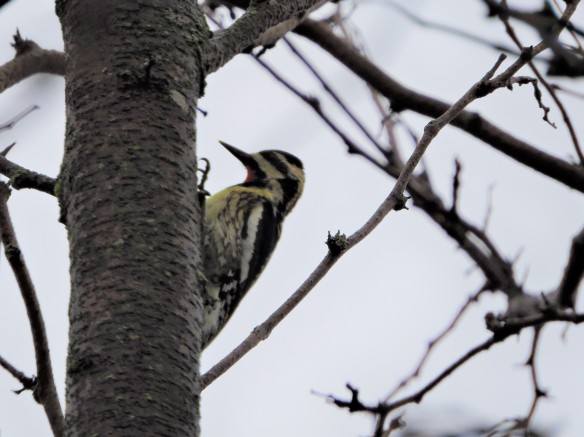
Yellow-bellied Sapsucker
Here is one of a couple of Yellow-bellied Sapsuckers that were working in the arboretum. It was yet another new bird for me at this particular location.
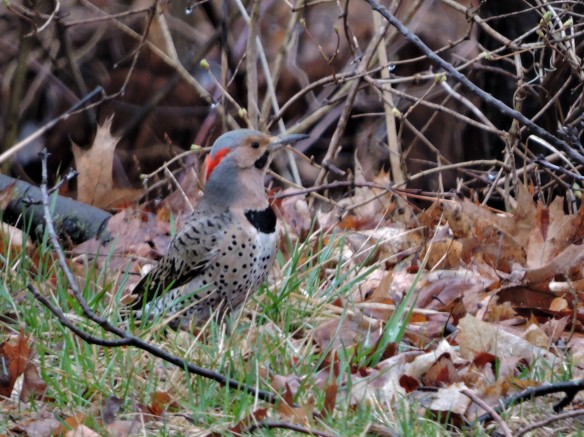
Northern Flicker
Many, many Northern Flickers were also out to represent the woodpeckers, with the species being a FOGY the week before.
With all the new additions my annual green list is sitting at 68 species. I also think I have seen the true potential at Purdue. I birded it intermittently last year but will definitely be spending more time there this spring. It is also less than a mile from my home, which is nice. Speaking of birding close to home, I have finally jumped on the Five Mile Radius (or 5MR) bandwagon.
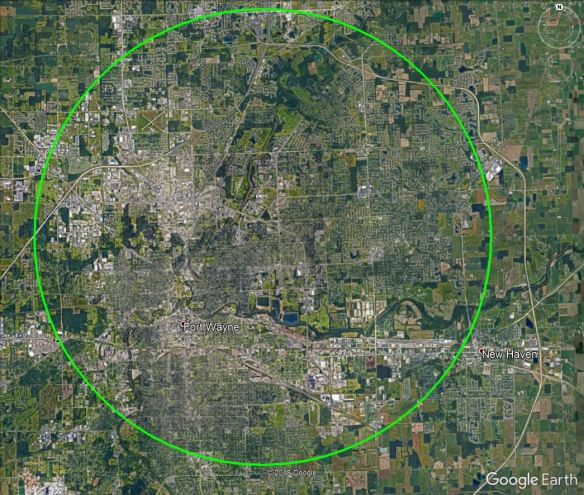
My Fort Wayne 5MR
Here is my circle, centered on my Fort Wayne home. eBird says I have seen 137 species inside of this five-mile radius. That dates back to my sightings from before I moved last year, but for ease of counting and also to better show what can be seen in the radius, I decided to make mine retroactive. It includes many miles of river, Purdue, Johnny Appleseed Park, Franke Park, Lindenwood Cemetery and Nature Preserve, the water treatment plant, and Deetz Nature Preserve. I also catch the very northern tip of Foster Park to ensure I will be able to get Yellow-throated Warblers! The only thing missing is marsh habitat, but I hope to be able to find at least a few small patches in my future explorations.



